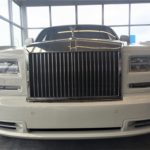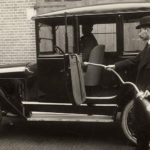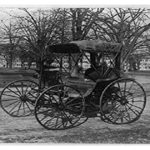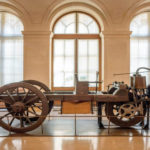2013 Rolls-Royce Phantom in English White over Moccasin interior with black carpets. This absolutely perfect Phantom is the dealership owner’s personal vehicle and sits in a heated garage year round. Only 4,500 very careful miles, this is truly one of the finest examples in the country. Please call me for more information. Price was recently reduced considerably for quick sale.
Continue readingCategory Archives: History
Mercedes-Benz Combination of Luxury and Performance
Mercedes-Benz Combination of Luxury and Performance across the full line of models including luxury sedans, SUVs, coupes, roadsters, convertibles & more. Considering buying a Mercedes? call me now!
Continue readingMaserati World The Beautiful Range Of Luxury Models
Maserati World The Beautiful Range Of Luxury Models available in Akron Ohio, click to learn more about the history and new models of Maserati luxury cars.
Continue readingIntroducing the Rezvani Tank
Introducing the Rezvani Tank, Models, Price, Designer, and the History THE BEGINNING As a young boy, founder Ferris Rezvani aspired to become a fighter pilot just like his father. In order to develop a thrill similar to flying an F-4 fighter jet, Mr. Rezvani set out to create an extreme sports car that gave drivers the opportunity to experience the same exhilaration and g-forces behind the wheel. This is represented in the Rezvani emblem, with wings representing his roots in aviation and steering wheel and racing stripes representing the brand’s dedication to driving. Rezvani Motors is an automotive designer and manufacturer of high-performance supercars based in Irvine, California. Rezvani Motors was founded by Iranian-American entrepreneur Ferris Rezvani, one of the designers of Vencer’s Sarthe supercar who formerly worked with Aston Martin, Ferrari, and DBC. The company’s main product is the Rezvani Beast, a self-funded project by Rezvani. Rezvani Motors released […]
Continue readingHistory of Microfiber Products
History of Microfiber Products Microfiber is synthetic fiber finer than one denier or decitex (dtex, is a metric unit)/thread, having a diameter of fewer than ten micrometers. This is smaller than the diameter of a strand of silk (which is approximately one denier), which is itself about 1/5 the diameter of a human hair. The most common types of microfibers are made from polyesters, polyamides (e.g., nylon, Kevlar, Nomex, trogamide), or a conjugation of polyester, polyamide, and polypropylene. Microfiber is used to make mats, knits, and weaves for apparel, upholstery, industrial filters, and cleaning products. The shape, size, and combinations of synthetic fibers are selected for specific characteristics, including softness, toughness, absorption, water repellency, electrostatics, and filtering capabilities. Production of ultra-fine fibers (finer than 0.7 deniers) dates back to the late 1950s, using melt-blown spinning and flash spinning techniques. However, only fine staples of random length could be manufactured and […]
Continue readingCar Detailing History
Auto Detailing History, Products, and The Inventors In 1888 Friedrich Menzer founded a chemical factory in the city of Pforzheim, Germany, to manufacture fine polishing agents for gold and other precious metals. The company succeeded in producing Paris Reda, which was considered the best fine polish for gold, but otherwise, the polish company was slow to take off. Menzer then moved his company to nearby Karlsruhe in 1899 and systematically opened branches in foreign markets starting in 1921. In 1905 Mary Anderson first decided that automobiles could use a wiper blade when she saw motorists emerging from their vehicles to clean their windshields by hand. It was November 1903. Her spring-loaded wiper arm was patented in 1905 and then replaced by a mechanical arm in 1913. Since then, the wiper blade has pretty much remained the same. And in 1910 when the motor car was still somewhat of an […]
Continue readingThe First American Car Inventor
The First American Car Inventor, Who invented the first automobile in the united states? and who set up the first American car manufacturing company?
Continue readingThe History of the Electric Car
The History of the Electric Car, In 1828, Ányos Jedlik, a Hungarian who invented an early type of electric motor created the tiny model car powered by his new motor. In 1834, Vermont blacksmith Thomas Davenport, the inventor of the first American DC electric motor, installed his motor in a small model car, which he operated on a short circular electrified track. In 1835, Professor Sibrandus Stratingh of Groningen, the Netherlands, and his assistant Christopher Becker created a small-scale electrical car, powered by non-rechargeable primary cells. In 1838, Scotsman Robert Davidson built an electric locomotive that attained a speed of 4 miles per hour (6 km/h). In England, a patent was granted in 1840 for the use of tracks as conductors of electric current, and similar American patents were issued to Lilley and Colten in 1847. Sources point to different creations as the first electric car. Between 1832 and 1839 […]
Continue readingHistory of the automobile
History of the Automobile, The early history of the automobile can be divided into a number of eras, based on the prevalent means of propulsion. Later periods were defined by trends in exterior styling, size, and utility preferences. In 1769 the first steam-powered automobile capable of human transportation was built by Nicolas-Joseph Cugnot. In 1808, François Isaac de Rivaz designed the first car powered by an internal combustion engine fueled by hydrogen. In 1870 Siegfried Marcus built the first gasoline-powered combustion engine, which he placed on a pushcart, building four progressively sophisticated combustion-engine cars over a 10-to-15-year span that influenced later cars. Marcus created the two-cycle combustion engine. The car’s second incarnation in 1880 introduced a four-cycle, gasoline-powered engine, an ingenious carburetor design, and magneto ignition. He created an additional two models further refining his design with steering, a clutch, and brakes. The four-stroke petrol (gasoline) internal combustion engine that […]
Continue reading








